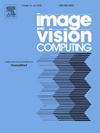Spatial–temporal sequential network for anomaly detection based on long short-term magnitude representation
IF 4.2
3区 计算机科学
Q2 COMPUTER SCIENCE, ARTIFICIAL INTELLIGENCE
引用次数: 0
Abstract
Notable advancements have been made in the field of video anomaly detection in recent years. The majority of existing methods approach the problem as a weakly-supervised classification problem based on multi-instance learning. However, the identification of key clips in this context is less precise due to a lack of effective connection between the spatial and temporal information in the video clips. The proposed solution to this issue is the Spatial-Temporal Sequential Network (STSN), which employs the Long Short-Term Magnitude Representation (LST-MR). The processing of spatial and temporal information is conducted in a sequential manner within a spatial–temporal sequential structure, with the objective of enhancing temporal localization performance through the utilization of spatial information. Furthermore, the long short-term magnitude representation is employed in spatial and temporal graphs to enhance the identification of key clips from both global and local perspectives. The combination of classification loss and distance loss is employed with magnitude guidance to reduce the omission of anomalous behaviors. The results on three widely used datasets: UCF-Crime, ShanghaiTech, and XD-Violence, demonstrate that the proposed method performs favorably when compared to existing methods.
求助全文
约1分钟内获得全文
求助全文
来源期刊

Image and Vision Computing
工程技术-工程:电子与电气
CiteScore
8.50
自引率
8.50%
发文量
143
审稿时长
7.8 months
期刊介绍:
Image and Vision Computing has as a primary aim the provision of an effective medium of interchange for the results of high quality theoretical and applied research fundamental to all aspects of image interpretation and computer vision. The journal publishes work that proposes new image interpretation and computer vision methodology or addresses the application of such methods to real world scenes. It seeks to strengthen a deeper understanding in the discipline by encouraging the quantitative comparison and performance evaluation of the proposed methodology. The coverage includes: image interpretation, scene modelling, object recognition and tracking, shape analysis, monitoring and surveillance, active vision and robotic systems, SLAM, biologically-inspired computer vision, motion analysis, stereo vision, document image understanding, character and handwritten text recognition, face and gesture recognition, biometrics, vision-based human-computer interaction, human activity and behavior understanding, data fusion from multiple sensor inputs, image databases.
 求助内容:
求助内容: 应助结果提醒方式:
应助结果提醒方式:


